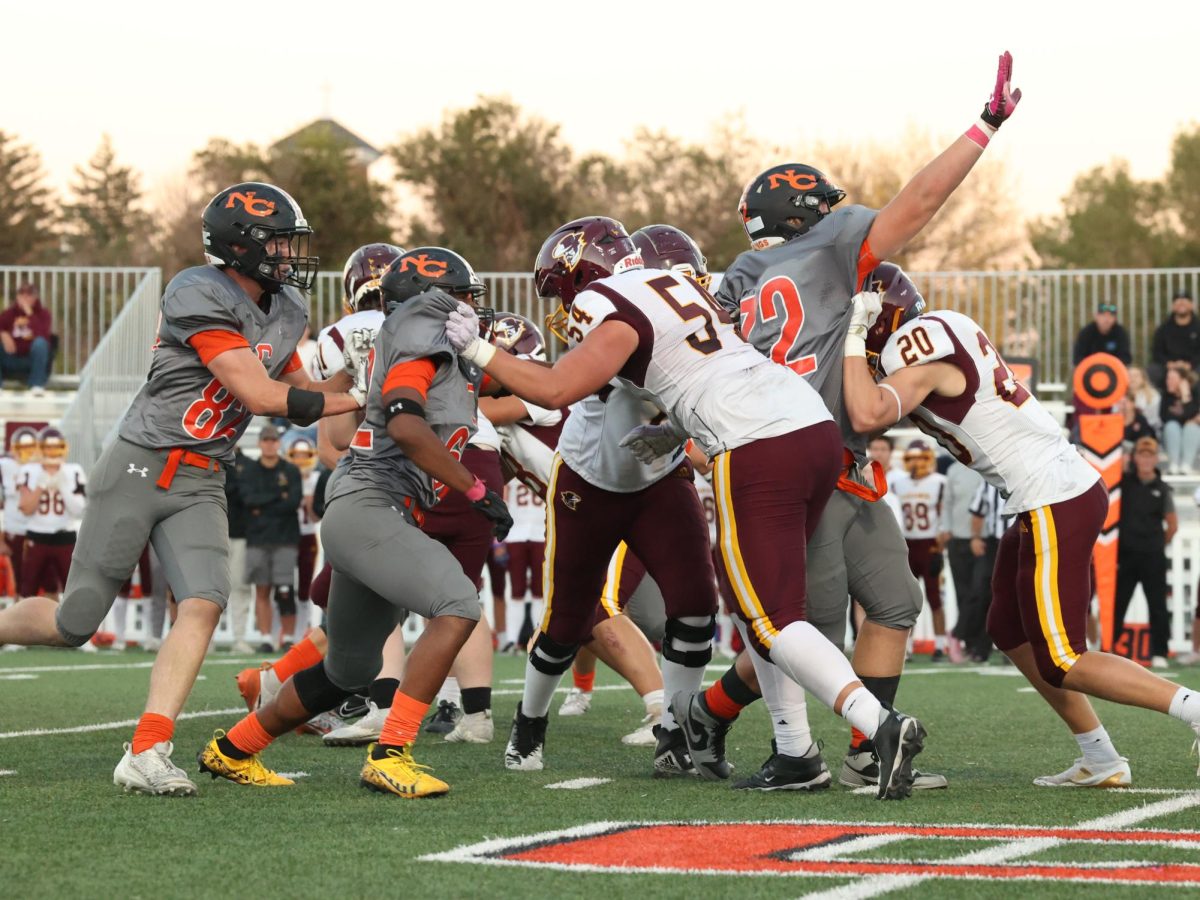Please remove your hat, a phrase that causes many students to roll their eyes and sigh in frustration. About 10 years ago, a committee with the intention to increase graduation rates in Natrona County was looking for ways to create more student involvement. Several school district meetings invited students, teachers, parents, and administrators to discuss how to boost graduation rates and build better skill sets. The conversations took an unexpected turn when parents started pushing towards dress code as a main issue, which led to hats being banned.
Natrona assistant principal Matt Crabb, who was involved in the committee, said “Most of us on the committee were surprised that it took that turn, because quite frankly, most of us didn’t have an issue with the nature of wearing hats.” Unlike any other rule in the dress code, the no hat rule doesn’t seem to have rational justification. As long as it doesn’t promote alcohol/drugs, have profanity, or show inappropriate logos then it doesn’t interfere with the safety of the school’s environment. Because of this, students tend to disobey the rule by wearing regular ball caps and beanies in the hallways, and attempting to get away with it in class. “Hats on a blanket level don’t have a specific danger associated with it, which I think is where most of the pushback comes about the rule,” said Crabb.
In a survey conducted by the author during the 2023-2024 school year, 90 NC students were asked if they agreed ‘hats should be allowed to be worn in school’. 96.667% of freshmen through seniors said yes. Some of those students say they wouldn’t wear hats anyway, but still agree the rule serves no specific purpose. Jarrin Lewallen (12th) helped start a student-led petition against prohibiting hats in the building. “We started it my sophomore year and we collected a bunch of signatures from some teachers but mostly students,” said Lewallen. The petition had nearly 1,000 signatures from all high schools in the district, and Lewallen regrets not going to discuss their issues with the school board.
The issues associated with hats in school did not stem from the physical hat. “It is the defiance that can be associated with wearing it,” said Crabb. A hat can be used as a tool to hide someone’s face while in the classroom, leading to a lack of attentiveness during learning time. Many students have also heard that hats produce a safety issue because it blocks cameras from being able to see someone’s face, “but during covid my freshman year, everyone had to wear masks which covers more than any hat I’ve seen,” said Lewallen. The district sets rules in place to ensure a safe environment for students and teachers, and although the rule may not have clear rationale as to why it’s implicated, hats become a metaphor for a larger issue. “Are we pushing an environment that is taken seriously?” said Crabb.
Removing headwear in public settings has been rooted into society as a sign of respect. NC psychology teacher Jared Swensen pointed out that eye contact and being able to see someone’s face during conversation is something Americans generally expect, to ensure they are being heard. “Removal of headgear can potentially remove any obstacles to eye contact which is a prized practice in our culture,” said Swenson. A beanie, ball caps, and even cowboy hats don’t cover someone’s eyes unless they are purposefully doing so. In that case, the disrespect isn’t due to the hat. If the person wearing it is not showing respect, they wouldn’t without a hat.
The hat rule is linked to the term ‘social deference’ which, according to Swenson, “means to me to follow the rules of an institution out of respect for that institution.” Schools and even the military practice teaching deference, because it’s a necessary soft skill to have. People won’t always agree with guidelines set in workplaces, schools, or society and it is easy to miss the purpose behind specific rules. Challenging traditions is something people are becoming more accustomed to, but it is important to ask the purpose behind the questioning. “How do we not just recognize our rights but what are our responsibilities?” said Crabb. People have the responsibility to follow basic guidelines for the sake of others, but there are things people should be allowed to question.
In school, social expectations are suited for students as a whole, rather than individuals which can compliment or collide with values from home. Madeline Elston(11th) is a student who thinks the no hat rule is necessary and she said, “Allowing hats could make other students more aggressive in allowing other things.” Although this is a point anyone with power over guidelines has to consider, how students are reacting towards hats specifically should raise questions about how necessary the rule is. “The rule, to me, means that the schools aren’t allowing people to express their personality,” said Lewallen. Disagreeing with a rule is one thing, but wanting to influence change is another. It is important to have a clear view of both sides of a decision, and make a respectful claim that represents both the problem and solutions to it. “We live in a culture where appropriate rebelling is not necessarily a bad thing, we want to question authority in an appropriate manner, and ask questions because you’re a citizen and should be an active member,” said Crabb.
Although hats are a part of the dress code, it is the only rule that administrators let slide on specific days throughout the year. While other rules are enforced year round, spirit days often allow wearing hats as part of themed costumes or hats alone. There is no sagging pants day or any other event that doesn’t follow dress code expectations, and that’s likely because the stereotype of hats being disrespectful is fading. “I think that if the rule wasn’t a rule anymore, more people would be ok with it,” said Lewallen.












